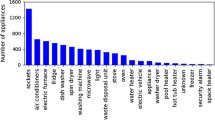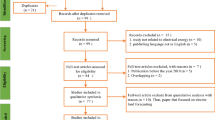Abstract
Regression analysis suggests that zonal averages of locational marginal prices under the nodal market are about 2 % lower than the balancing energy prices that would occur under the previous zonal market structure in ERCOT. The estimates for the nodal market price effects are found after controlling for such factors as natural gas prices, total system load levels, non-dispatchable generation levels, the treatment of local congestion costs, and the treatment of the revenues received by the market from the auctioning of transmission rights. Our finding is limited to periods which are not characterized by price spikes in the wholesale market.
Similar content being viewed by others
Notes
For a more technical explanation, see Dan Jones, Potomac Economics, MCPE and Offer Cap/Floor Consistency, etc., presentation to ERCOT TAC/WMS, June 13, 2008, available at: www.ercot.com/content/meetings/wms/keydocs/2008/0613/Jones_TAC_(20080613).ppt.
Local transmission congestion cost data for each 15-min interval during the zonal market period were sought from ERCOT. However, these data are not available.
We were unable to obtain comparable data for 2010.
See Potomac Economics, IMM Report to the ERCOT Board of Directors, Sept. 18, 2012.
These are posted on www.ercot.com under the monthly meeting materials of the Reliability and Operations Subcommittee.
See http://planning.ercot.com/reports/demand-energy/. Note that users must register with ERCOT to request permission to access this website.
See http://www.eia.gov/dnav/ng/hist/rngwhhdd.htm. Last accessed November 12, 2012.
The results are very similar if the 95th percentile is used to construct the dummy variable for high demand.
If one is interested in the impacts of a 1,000 MW change in baseload generation or the level of overall system demand upon wholesale prices, the coefficient estimates may be multiplied by 250 MWh (= 1,000 MW \(\times \) 15/60 min per hour), instead of 1,000 MWh.
Please note that this market heat rate value is a weighted average of relevant heat rates in some periods and negligible impacts in other periods. It does not reflect the heat rates of particular power plants.
Estimation of our model with no interactions between the nodal dummy variable and explanatory variables yield results suggesting there have been no savings from the switch to a nodal market structure. We are grateful for comments from an anonymous reviewer which convinced us of the need to include interactive variables to capture how the change in market structure affected the formulation of wholesale prices.
In hopes of controlling for this effect, data on physical reserves for each 15-min period during the time the zonal market was in operation was requested. However, ERCOT was not able to fulfill this request.
References
Baldick, R. (2003). Shift factors in ERCOT congestion pricing. Technical report, March 2003. Presented at the Public Utility Commission of Texas.
Baldick, R. (2012). Wind and energy markets: A case study of Texas. IEEE Systems Journal, 6(1), 27–34.
Baughman, M. L., Siddiqi, S. N., & Zarnikau, J. (1997). Advanced pricing in electrical systems, part 1: Theory. IEEE Transactions on Power Systems, 12(1), 489–495.
Cleary, M. (2011). Market benefits observed: The first six months. Accessed June 21, 2011, from http://www.ercot.com/calendar/2011/06/20110621-BOD.
Climate Policy Initiative. (2011). International experiences of nodal pricing implementation: Frequently asked questions. Berlin: Climate Policy Initiative.
Foley, A. M., Gallachoir, B. P. O., Hur, J., Baldick, J., & McKeogh, E. J. (2010). A strategic review of electricity system models. Energy, 35(12), 4522–4530.
Green, R. (2007). Nodal pricing of electricity: How much does it cost to get it wrong? Journal of Regulatory Economics, 31, 125–149.
Hinsley, R. (2006). Memo to the ERCOT Board, Item 6, Market Redesign Report. Accessed April 11, 2006, from http://www.ercot.com/calendar/2006/04/20060418-BOARD.
Huber, P. J. (1973). Robust regression: Asymptotics, conjectures and Monte Carlo. Annals of Statistics, 1, 799–821.
Ma, X., Sun, D., & Cheung, K. (2003). Evolution toward standard market design. IEEE Transactions on Power Systems, 18(2), 460–469.
Petterson, M. (2011). Presentation to the ERCOT Board, Item 10a. Accessed January 18, 2011, from http://www.ercot.com/calendar/2011/01/20110118-BOD.
Rousseeuw, P. J., & Leroy, A. M. (1987). Robust regression and outlier detection. New York: Wiley.
Rousseeuw, P. J., & Yohai, V. J. (1984). Robust regression by means of S estimators. In J. Franke, W. Hardle, & R. D. Martin (Eds.), Robust and nonlinear time series analysis (pp. 256–274). Lecture notes in statistics, 26. New York: Springer.
Schweppe, F. C., Caramanis, M. C., Tabors, R. D., & Bohn, R. E. (1988). Spot pricing of electricity. Norwell, MA: Kluwer.
Tabors Caramanis & Associates and KEMA Consulting. (2004, November). Cost–benefit assessment of the Texas nodal market.
Woo, C. K., Horowitz, I., Horii, B., Orans, R., & Zarnikau, J. (2012). Blowing in the wind: Vanishing payoffs of a tolling agreement for natural-gas-fired generation of electricity in Texas. The Energy Journal, 33(1), 207–229.
Woo, C. K., Horowitz, I., Moore, J., & Pacheco, A. (2011a). The impact of wind generation on the electricity spot-market price level and variance: The Texas experience. Energy Policy, 39(7), 3939–3944.
Woo, C. K., Zarnikau, J., Moore, J., & Horowitz, I. (2011b). Wind generation and zonal-market price divergence: Evidence from Texas. Energy Policy, 39, 3928–3938.
Yohai, V. J. (1987). High breakdown point and high efficiency robust estimates for regression. Annals of Statistics, 15, 642–656.
Acknowledgments
The authors would like to thank Dan Jones of Potomac Economics for discussions during the course of this work. We also wish to thank two anonymous referees and providing exceptionally detailed and valuable comments on earlier drafts.
Author information
Authors and Affiliations
Corresponding author
Rights and permissions
About this article
Cite this article
Zarnikau, J., Woo, C.K. & Baldick, R. Did the introduction of a nodal market structure impact wholesale electricity prices in the Texas (ERCOT) market?. J Regul Econ 45, 194–208 (2014). https://doi.org/10.1007/s11149-013-9240-9
Published:
Issue Date:
DOI: https://doi.org/10.1007/s11149-013-9240-9




